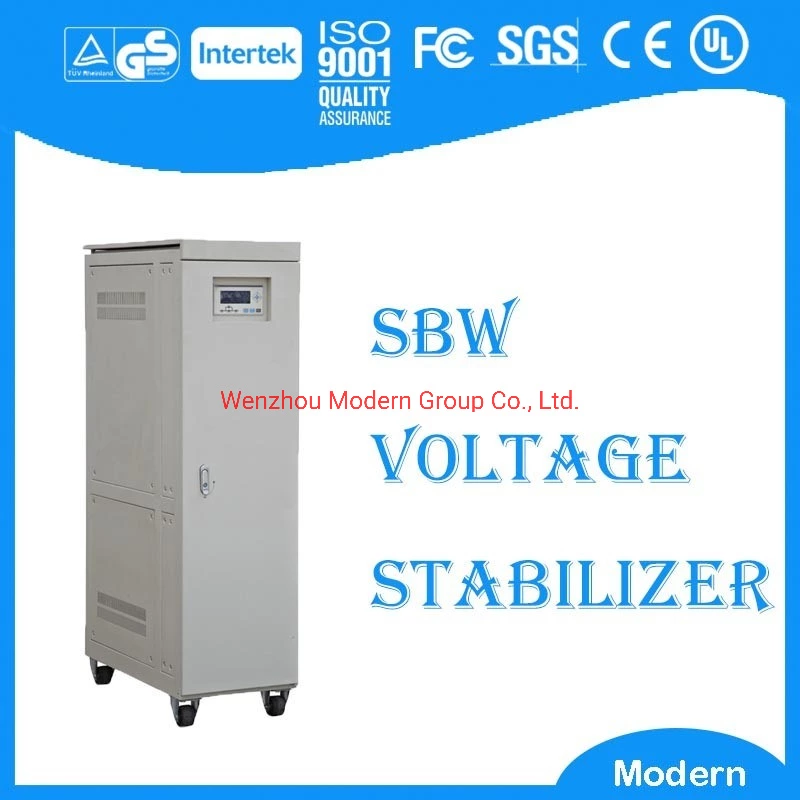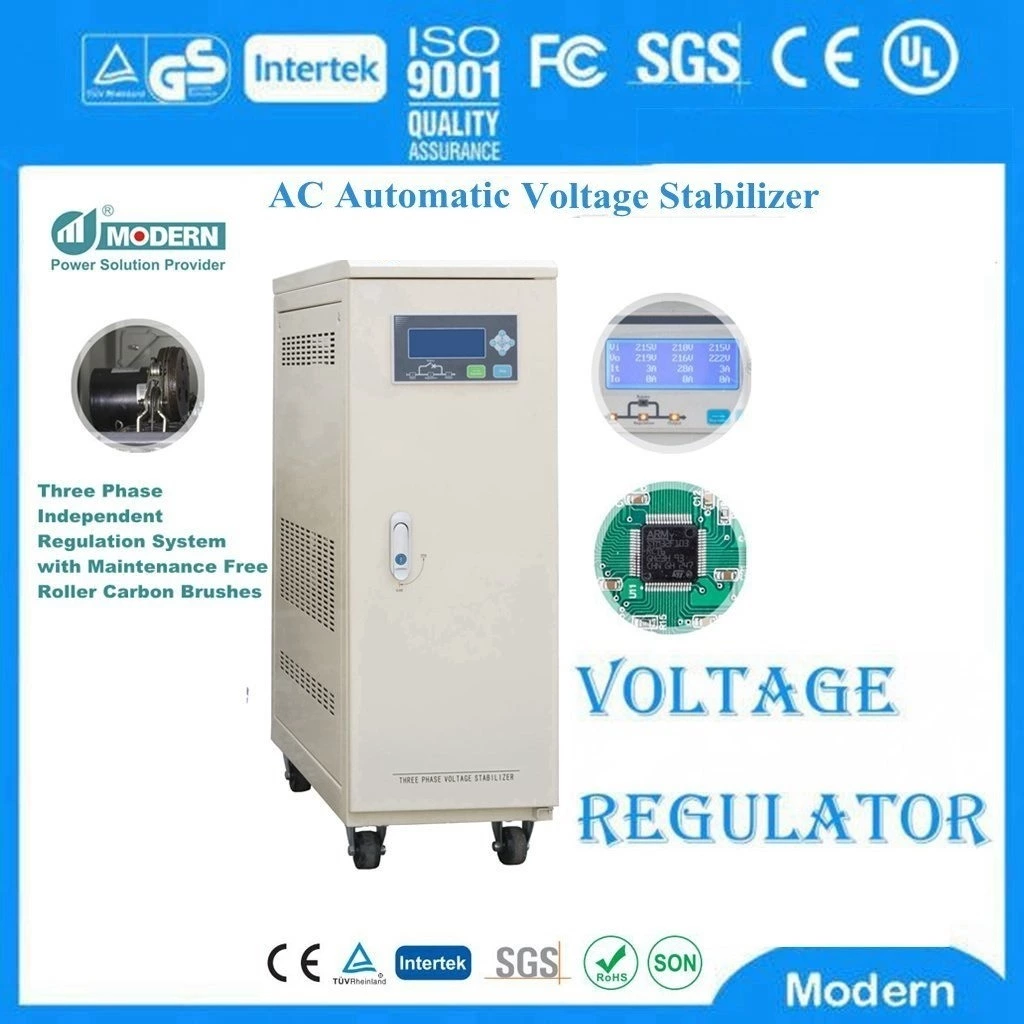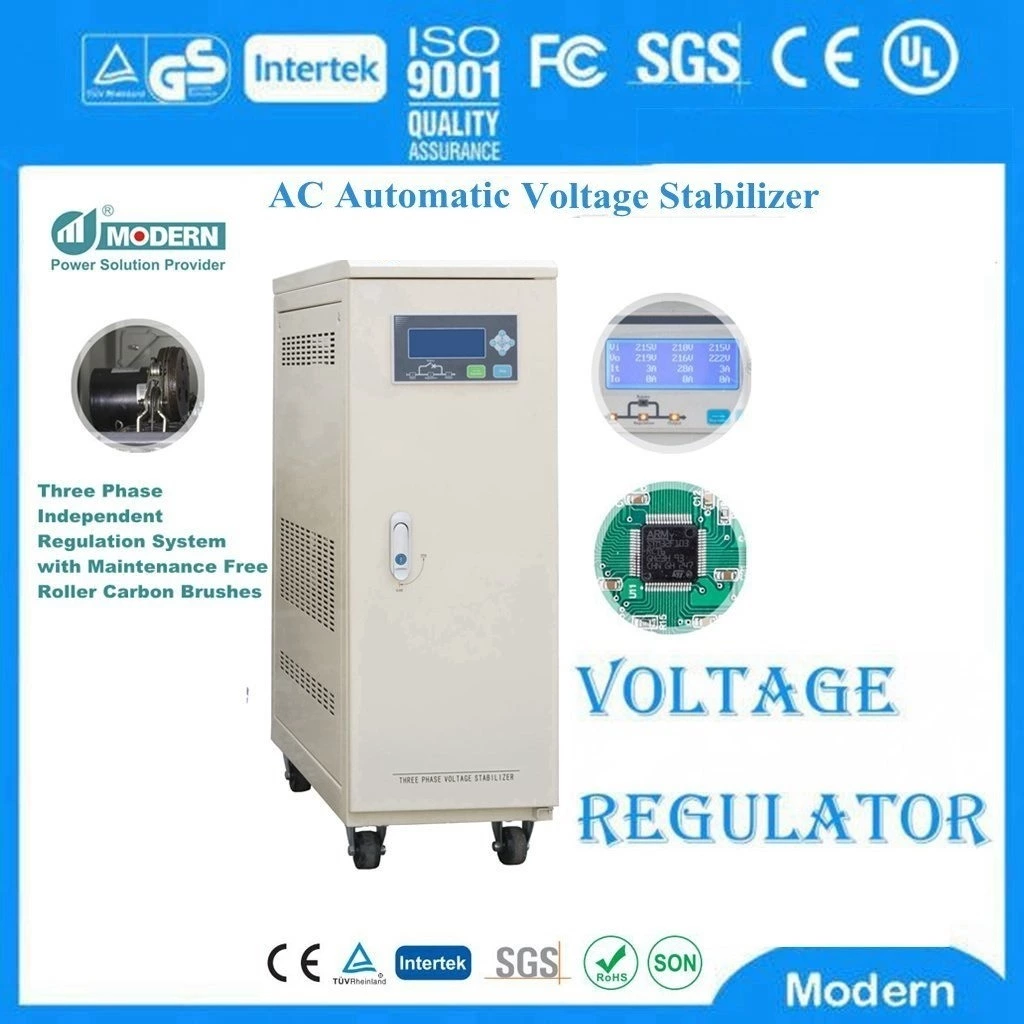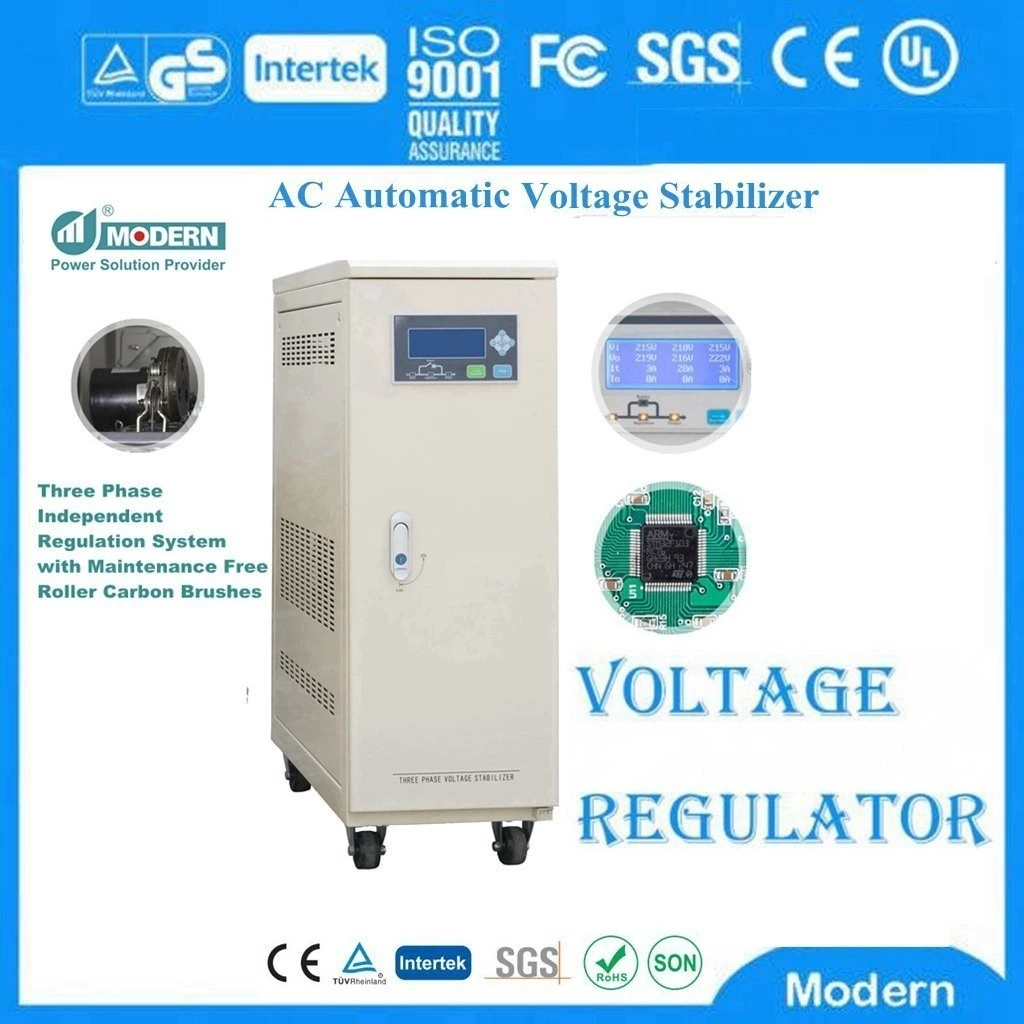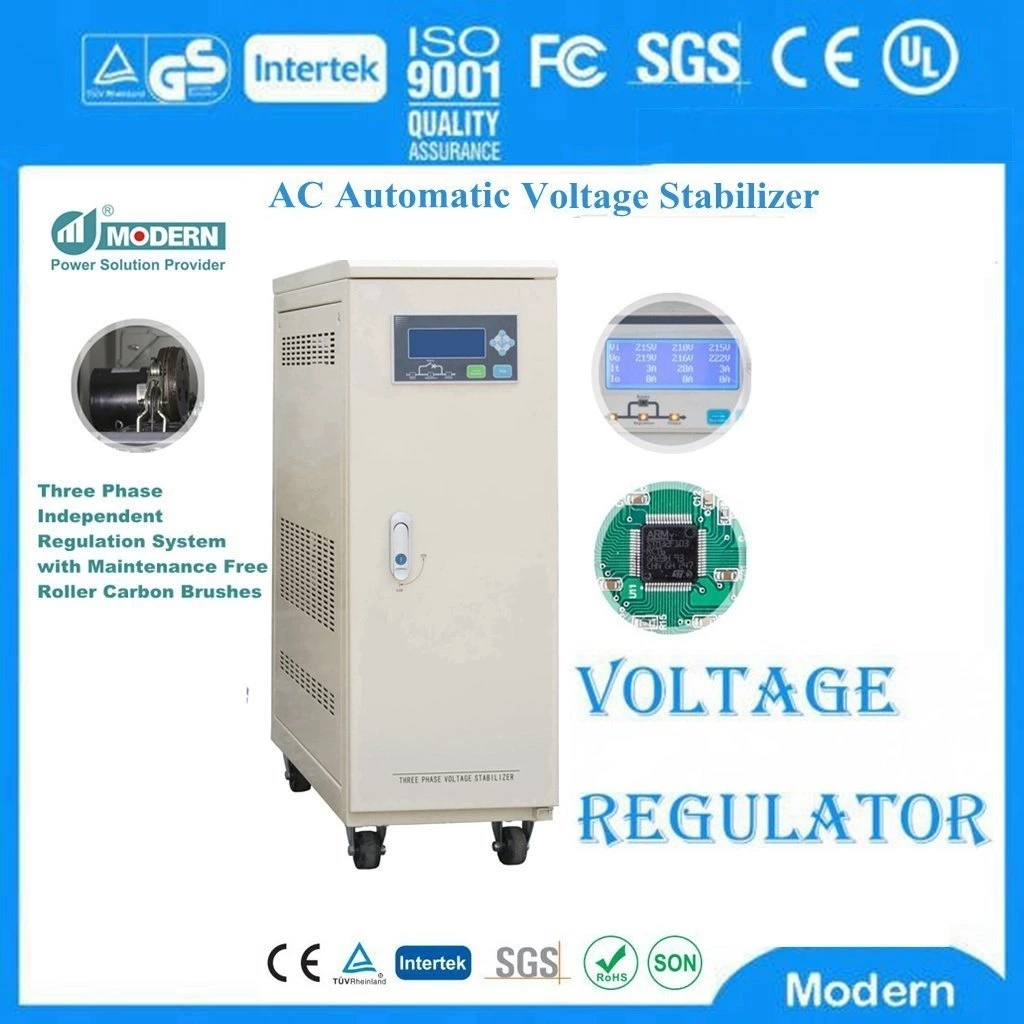Glossary of Power Conditioner Specification Guide
The specifications for power conditioners and voltage regulators can be confusing. The following summary of typical power conditioner terminology is oriented towards voltage regulators and sag ride-through devices, although many of the same terms are applicable to other technologies such as the uninterruptible power supply (UPS), dynamic voltage restorer (DVR), etc.
Use the links below to jump to the topic of interest
| Circuit Breaker Correction Duration Efficiency Electronic Bypass Fault Clearing And Overload Capacity Harmonic Distortion Impedance |
Independent Phase Regulation Input Range Input Voltage Size(kVA) Line Isolation Load Load Power Factor Minimum Load |
Noise Attenuation Operating Frequency Output Regulation Phase Response Time Ride Through Snubber Surge Suppression Technology |
Circuit Breaker
This feature provides protection from short circuits and overcurrent for the power conditioner and equipment and wiring downstream of the power conditioner, regardless of events upstream from the power conditioner.
Correction Duration
Correction duration is the length of time that a power conditioner can continue to correct a power quality event. Power conditioners that rely on energy storage (e.g. capacitors, batteries, flywheels) as their primary means of conditioning may not be able to provide correction for events that last for more than a few cycles or seconds or if several severe events happen in rapid succession. Power conditioners that do not rely on energy storage of generally provide unlimited correction time.
Where sags and undervoltage typically represent more than 92% of power problem events, interruptions represent less than 4% of such problems.
Efficiency

Efficiency is simply the power coming out of a unit divided by the power going into a unit, usually expressed as a percentage.
All voltage regulators and power conditioners "consume" energy in the process of performing their task. Typically this consumption is in the form of losses that occur within the components (e.g. transformers) where the lost electrical energy is converted to mechanical energy in the form of heat or motion (vibrations). Efficiencies can run the spectrum from less than 50% to 99%. Most units will have efficiencies that are relatively constant across the load range, however ferroresonant transformer-based units tend to have efficiencies that fall off very quickly for points below full load.
Efficiency may be one of the most overlooked parameters when selecting a voltage regulator or power conditioner. A quick gauge of the cost of differences in efficiency can be had by multiplying the KVA size of the units by the difference in efficiency by 7. The result will be an approximation of the annual energy cost difference in dollars. For example, for 25 KVA units with a 3% difference in efficiencies, the unit with the lower efficiency would cost about 5 more per year in extra energy consumption.
Electronic Bypass
With many power conditioners, if a malfunction occurs, the power conditioner shuts off and the power for the load is lost. For mission critical and other applications, this is not an acceptable option. An electronic bypass allows the power conditioner to continue providing unregulated power to the load, even in the case of a component failure. Besides not dropping the load, the electronic bypass also protects the load in the event of a component failure in the power conditioner. For some types of power conditioners, a component failure or malfunction could result in potentially damaging output voltages being sent to the load.
Fault Clearing and Overload Capacity
This is a measure of a unit’s ability to tolerate levels of current higher than the rated current without sustaining short or long term wear or damage. Many electric devices, like motors, magnets, transformers, etc., require a large inflow of current when started (inrush current). A "typical" AC motor has an inrush of 500 to 1000% of the normal current that peaks in a few cycles and then decays to normal levels within 10 to 30 cycles. Power conditioners with ratings like 1000% for 1 cycle might not be good choices for industrial or commercial applications with frequent or large inrush current. For this measurement, the higher the percentage and the longer the time at that percentage, the better the unit should stand up to high inrush applications.
Fault clearing has a relationship with overload capacity in that both describe the ability of the power conditioner to operate for some period of time at current levels above the unit's rating. If a power conditioner cannot pass enough current without tripping or shutting down, downstream equipment and protective devices may not be able to "clear" or reset themselves, thus creating an annoying operational problem.
Harmonic Distortion
This is the distortion of the voltage waveform by the power conditioner (making it appear jagged rather than smooth). The less distortion added the better.
Voltage regulators that operate by switching taps (tap changing), particularly electronic voltage regulators, can cause a phenomena known as "notching". If the waveform is not at zero (the point where it crosses the horizontal axis) when the regulator changes taps, then the output voltage waveform will be distorted.
Impedance
Impedance is the opposition to the flow of electrons in an AC circuit as a function of the circuit's resistance, capacitance and inductance. Impedance in an AC circuit is analogous to resistance in a DC circuit. Even simple wire conductors have properties of resistance and inductance that affect the impedance of an AC circuit.
Input Voltage
Standard input voltage offerings. Also see Step Down-Step Up.
Output Regulation
Percent deviation above or below the nominal (or rated) output voltage when the incoming voltage is within the input range, In other words, this is a measure of how accurate or tight the output voltage will be. Smaller numbers mean more precise regulation. An output regulation of ±3% is well within the tolerance required by the vast majority of electric devices. For special applications such as laboratory testing or calibration, an output regulation of ±1.5% or less may be more desirable. For a nominal 208v output, ±3% output regulation equals 214v to 202v.
With many voltage regulators, there will be a direct correlation between the input range and the output regulation. As the output regulation becomes smaller, the input range will also shrink. This is due to the fact that manufacturers will have a fixed number of points or taps at which changes in output voltage can be made. To decrease the output regulation percentage without decreasing the input range requires that more taps be added. This becomes a custom and more expensive design.
Phase
Availability of single and three phase AC models.
Response Time

High impedance can have a significant impact on power quality in that it directly affects voltage as a function of the current flow. For example, a device drawing 1A on a circuit with a 1 ohm impedance and a 100V source will see 99V. If that same device draws 10A, it would see only 90V. The same device on a circuit with a 0.1 ohm impedance would see 99.9 and 99V, when drawing 1 and 10A, respectively. A circuit or system with a low impedance is said to be "stiffer" than its high impedance counterpart because the voltage changes less as a function of the current.
Independent Phase Regulation
In three phase applications, the incoming voltage level of each phase is frequently unbalanced (e.g. Phase A = 440v, Phase B = 469v, Phase C = 453v). This unbalance can cause many electric devices, such as motors, to run inefficiently which, in turn, causes them to run at higher temperatures and wear out prematurely. Units that offer independent phase regulation provide much more accurate voltage regulation and a higher level of protection than units that assume that the phase voltages are balanced.
Input Range
Percent deviation above and below the nominal (or rated) input voltage that can be corrected to within the specified output regulation. In other words, this is a measure of how widely the input voltage can vary from what it is supposed to be. The larger the "spread", the better (e.g. +10% to -25% provides a wider input voltage window than ±10%). For a nominal 480v input voltage, an input range of +10% to -25% equals 528v to 360v.
This is the time it takes the unit to respond to deviations in the incoming voltage. The shorter the time, the better the unit is at keeping the voltage within the output regulation range.
There is another term, "correction time" that may also appear in specifications. This is the time that it takes for the unit to adjust the output voltage to within the output regulation range, once the unit has begun to respond.
The total time it takes a unit to correct a low or high voltage situation is the response time plus the correction time.
Electronic voltage regulators are so fast, that response time and correction time are frequently used interchangeably. On the other hand, mechanical voltage regulators have a response time similar to that of the electronic units, but their slow correction time (measured in seconds) is really the limiting factor.
Size (kVA)
The kVA sizes available. See Calculating kVA Sizes.
Line Isolation
Line isolation is the electrical separation of the incoming and outgoing power through an isolation transformer. These transformers reduce noise and transients that may be present in the incoming power. The efficiency of units using an isolation transformer will typically be 2 or 3 percentage points lower than units not providing line isolation.
Load
A device or collection of devices that draw energy from the electrical system is called a load. The load can be made up of active (motor, variable frequency drive, etc.) or passive (resistor, inductor, capacitor, etc.) components. Also see Power Factor.
Load Power Factor
Devices like transformers and motors require power to maintain magnetic fields to perform their function. This so called "reactive” (kVAR) power flows into and out of the device but is not really consumed to perform work. The power that is consumed is called the “real” (KW) power and the vector sum of reactive and real power is called the "apparent"(kVA) power. Power factor (PF) is the ratio of real power to apparent power. The terms "leading” and "lagging” refer to reactive power being put in or taken out by the device.
In the real world, leading power factors are rare. For individual devices, lagging power factors can typically range from 0.4 to 0.99. With respect to power conditioners, a limitation on load power factor is generally required if the unit will not operate or respond properly if the power factor is too low. Unless the power factor of the existing or future devices to be protected are well known, it is best to select power conditioners with no (or minimal) load power factor limitations.
Minimum Load
Power conditioners are frequently used to protect circuits with multiple loads. If the power conditioner requires a minimum load to operate properly, then care must be taken to coordinate the starting and stopping of individuals loads.
Noise Attenuation
Noise attenuation (reduction) is a common feature of power conditioners. Electrical noise reduction is measured in decibels (db). The db is a logarithmic ratio of intensity or, in the case of electrical noise, the amplitude of one noise voltage level to another. For example, a 40 db reduction in noise means that the incoming noise is reduce by a factor of 10,000.
There are two types of reduced noise: common mode and normal mode.
Common mode noise exists between the ground and the neutral. Electronic devices are most sensitive to common mode noise. A shielded isolation transformer is very effective in reducing common mode noise.
Normal (or transverse) mode noise exists between the "hot" lines and the neutral. Normal mode noise is generally also reduced with a shielded isolation transformer.
Operating Frequency
Voltage regulators and power conditioners come in either 50 or 60 Hertz (frequency) or in some smaller units dual frequency (both 50 and 60 Hz). The USA, Canada, Mexico, Puerto Rico, South Korea, Taiwan and the Philippines use 60 Hz. Europe, most of Asia and Africa and Australia use 50 Hz. Latin American and Caribbean countries are a mix of 50 and 60 Hz, depending on the country. Some countries such as Japan, Saudi Arabia and Brazil use both.
In most developed countries, electric frequency deviates very little from the standard. A deviation one-half percent would be considered unusual. For this reason the operating frequency of the power conditioner is generally not an issue. In countries with very unstable electrical systems or when using a power conditioner behind a generator, frequency of operation can become an issue. Most power conditioners do not correct frequency. If frequency correction is required, it would normally be done separately ahead of the power conditioner.
Ride Through
The term "Ride through" in general usage refers to the capability of a device to correct or withstand a certain type of power quality problem. Typically, ride through is used in conjunction with sags or interruptions. Also see Correction Duration.
Snubber
A snubber is a special type of filter that blocks high frequency, high voltage transients that would not typically be handled by other means in the power conditioner.
Surge Suppression
Surge suppression provides protection for the power conditioner and downstream equipment against large "surges" of voltage as can happen during system transient events such as lightning strikes or transmission/distribution equipment malfunction. Surge Suppression is often accomplished with metal oxide varistors (MOVs), zinc oxide, or surge capacitors.
Technology
Motorized variable transformer units use motors to physically move or re-orient hardware within the unit to regulate the output voltage. These units can offer very precise regulation and good overload capacity but have very slow response times and, as with all mechanical systems, require regular maintenance or service. Electronic tap changers offer good regulation, very fast response times and have no moving parts, but some (not all) units have very poor overload capacity.
 Русский
Русский
 Français
Français
 Português
Português
 Español
Español
 اللغة العربية
اللغة العربية
